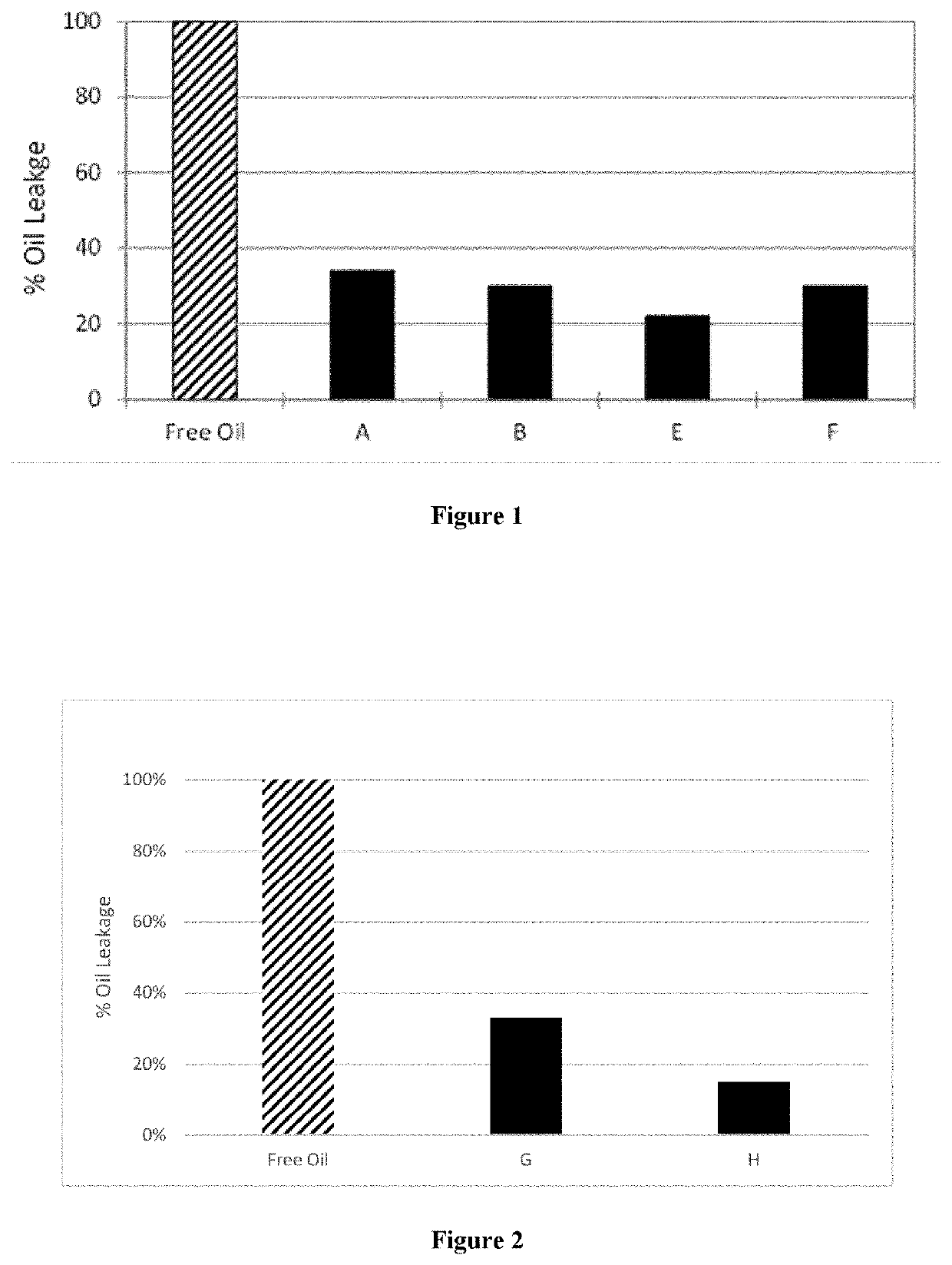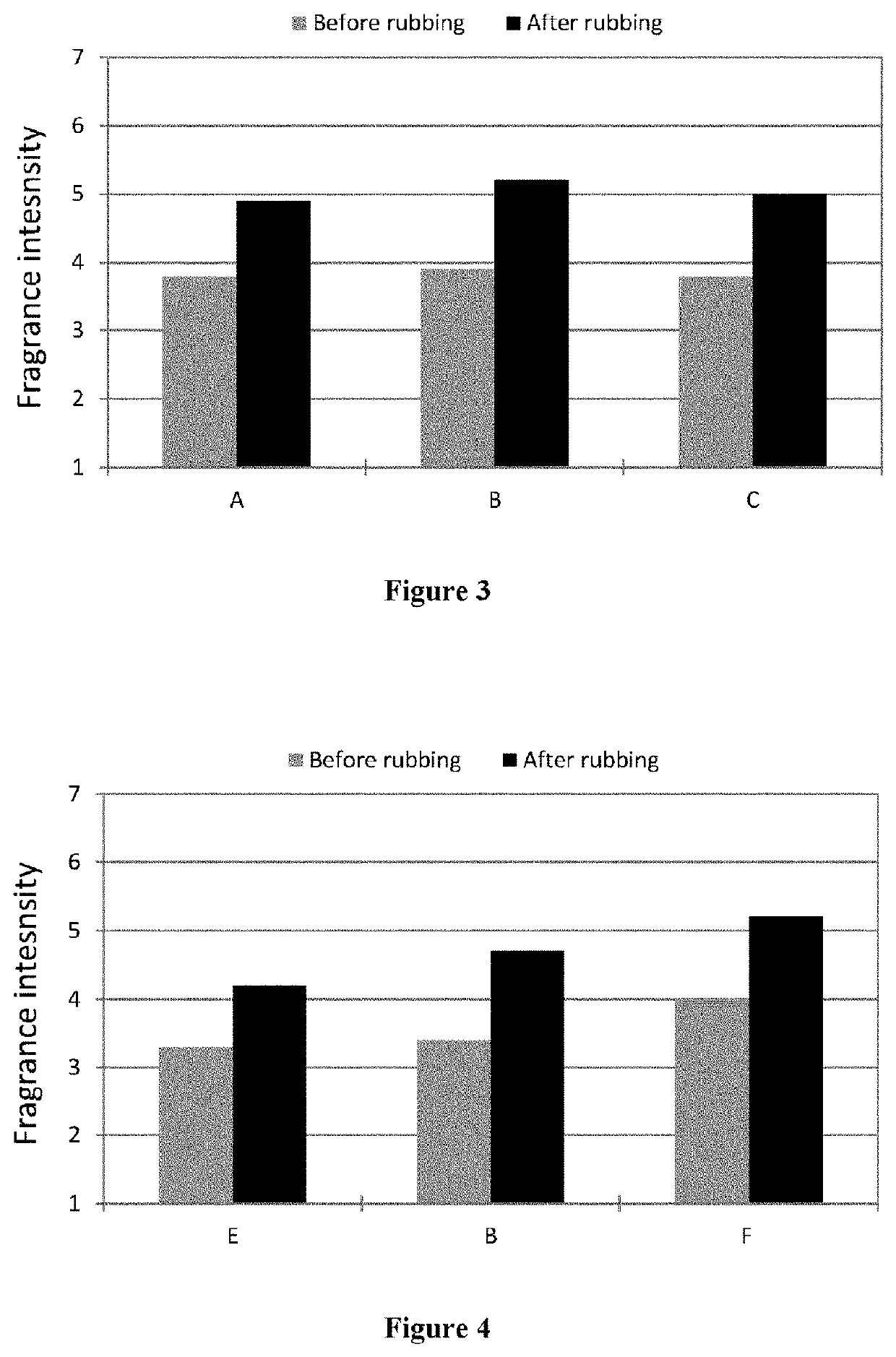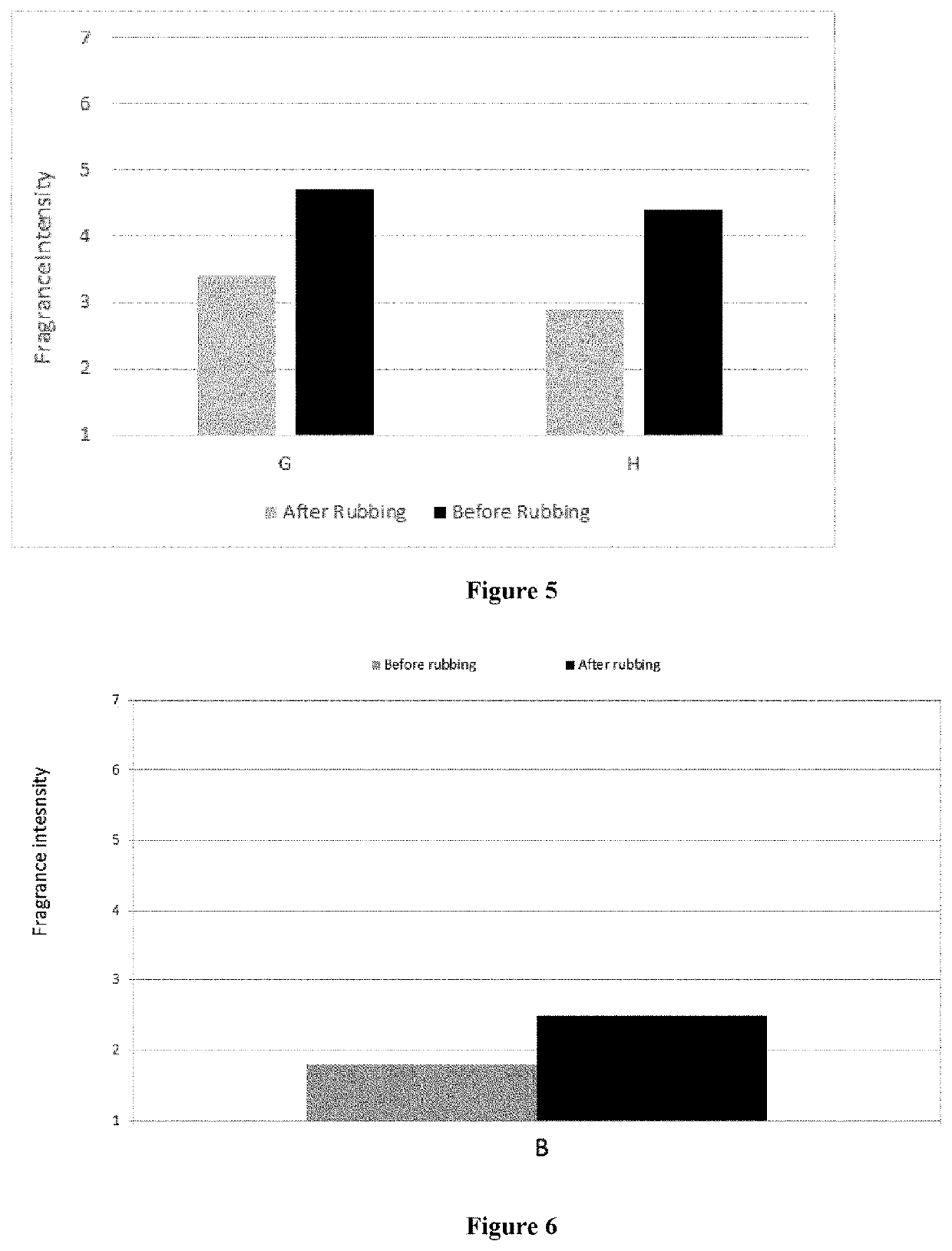Composite microcapsules
a technology of composite microcapsules and microcapsules, which is applied in the field of composite microcapsules, can solve the problems of affecting the mechanical stability of microcapsules, affecting the stability of microcapsules, so as to reduce the impact, increase the speed of diffusion of actives, and reduce the loss of olfactive benefits
- Summary
- Abstract
- Description
- Claims
- Application Information
AI Technical Summary
Benefits of technology
Problems solved by technology
Method used
Image
Examples
embodiment 1
[0182]According to an embodiment, the process for preparing microcapsules as defined above, comprises the steps of:[0183](i) providing as a dispersion in an aqueous vehicle, a hydrophobic internal phase comprising at least a polyfunctional monomer and a hydrophobic material;[0184](ii) mixing a first and second polyelectrolytes in the aqueous vehicle under conditions sufficient to form a suspension of complex coacervate nodules;[0185](iii) depositing the complex coacervate nodules at an interface of the aqueous vehicle adjacent to the hydrophobic internal phase to form a coacervate, wherein the hydrophobic internal phase forms the core and contains the polyfunctional monomer and the hydrophobic material therein; and[0186](iv) providing conditions sufficient to induce interfacial polymerization to form a core-composite shell microcapsule slurry,
wherein the weight ratio between the first and second polyelectrolytes forming the coacervate and the polyfunctional monomer is comprised betw...
embodiment 2
[0192]According to an embodiment, the process for preparing microcapsules as defined above, comprises the steps of:[0193](i) mixing a first and second polyelectrolytes in an aqueous vehicle under conditions sufficient to form a suspension of complex coacervate nodules;[0194](ii) providing as a dispersion in the aqueous vehicle, a hydrophobic internal phase comprising at least a polyfunctional monomer and a hydrophobic material;[0195](iii) depositing the complex coacervate nodules at an interface of the aqueous vehicle adjacent to the hydrophobic internal phase to form a coacervate, wherein the hydrophobic internal phase forms the core and contains the polyfunctional monomer and the hydrophobic material therein; and[0196](iv) providing conditions sufficient to induce interfacial polymerization to form a core-composite shell microcapsule slurry,
wherein the weight ratio between the first and second polyelectrolytes forming the coacervate and the polyfunctional monomer is comprised betw...
embodiment 3
[0202]According to an embodiment, the process for preparing microcapsules as defined above, comprises the steps of:[0203](i) providing as a dispersion in an aqueous vehicle comprising a first polyelectrolyte, a hydrophobic internal phase comprising at least a polyfunctional monomer and a hydrophobic material to form an oil-in-water emulsion;[0204](ii) adding a second polyelectrolyte in the oil-in-water emulsion[0205](iii) applying conditions sufficient to form a suspension of complex coacervate nodules;[0206](iv) depositing the complex coacervate nodules at an interface of the aqueous vehicle adjacent to the hydrophobic internal phase to form a coacervate, wherein the hydrophobic internal phase forms the core and contains the polyfunctional monomer and the hydrophobic material therein; and[0207](v) providing conditions sufficient to induce interfacial polymerization to form a core-composite shell microcapsule slurry,
wherein the weight ratio between the first and second polyelectroly...
PUM
| Property | Measurement | Unit |
|---|---|---|
| mean diameter(Dv | aaaaa | aaaaa |
| mean diameter(Dv | aaaaa | aaaaa |
| mean diameter | aaaaa | aaaaa |
Abstract
Description
Claims
Application Information
 Login to View More
Login to View More - R&D
- Intellectual Property
- Life Sciences
- Materials
- Tech Scout
- Unparalleled Data Quality
- Higher Quality Content
- 60% Fewer Hallucinations
Browse by: Latest US Patents, China's latest patents, Technical Efficacy Thesaurus, Application Domain, Technology Topic, Popular Technical Reports.
© 2025 PatSnap. All rights reserved.Legal|Privacy policy|Modern Slavery Act Transparency Statement|Sitemap|About US| Contact US: help@patsnap.com



